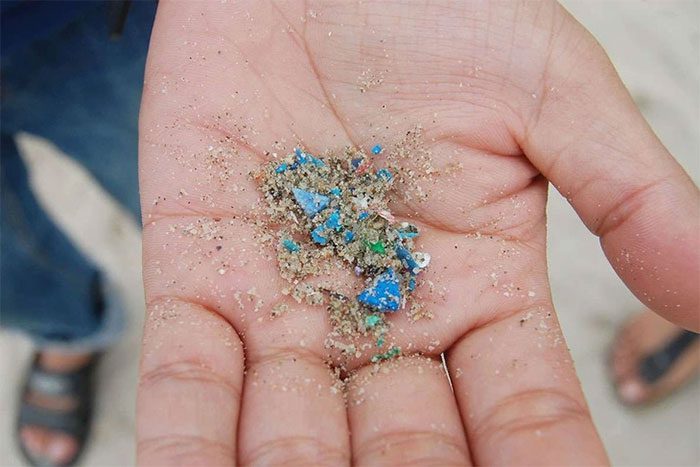A laboratory study has shown that microplastics can persist during cell division and contribute to the spread of cancer when present in tumors.
Microplastics and nanoplastics (MNP) are ubiquitous and can enter the body through the respiratory and digestive systems.

Plastic waste is everywhere – (Image: Geographical)
Previous studies have indicated that small MNP particles (less than 10 micrometers in size) found in plastic bottles have a better ability to infiltrate. Laboratory and mouse studies also showed that these particles can penetrate cell membranes, accumulate inside cells, and affect cellular functions, though the mechanism of MNP accumulation within cells remains unclear.
However, a new study published in the journal Chemosphere indicates that MNP can transfer from one cell to another during cell division.
The research team exposed various colon cancer cells to different sizes of MNP particles in petri dishes. Co-author Verena Pichler from the University of Vienna (Austria) stated that they focused on colon cancer cells due to the increasing incidence of this disease.
The team also concentrated on the most common type of plastic, polystyrene. They labeled the plastic molecules with fluorescence and tracked them.
They found that particles with a diameter of 10 micrometers (the largest microplastic particles in the experiment) could not penetrate the cells, whereas smaller particles could enter and accumulate within the cells.
The team also discovered that microplastic particles could persist in cancer cells that had undergone cell division, and that the cells containing MNP exhibited higher motility than those without MNP.
The increased mobility of cancer cells can aid in their spread to other organs in the body, a process known as metastasis. Thus, MNP may promote cancer metastasis.
“Concerning” Findings
This study does have limitations, as the cancer cells were cultured in petri dishes rather than in living organisms in a natural environment, and the microplastics in the experiment differ from those found in the external environment.
However, according to scientist Nicholas Zyg Chartres, who works at the University of California (USA) and the University of Sydney (Australia) and is not affiliated with the aforementioned study, these findings are still “very concerning.“
“This is an early warning sign for us to take action”, Chartres told LiveScience on March 22.
The research team stated that they will continue experiments with microplastics that are closer to those found in natural environments.



















































